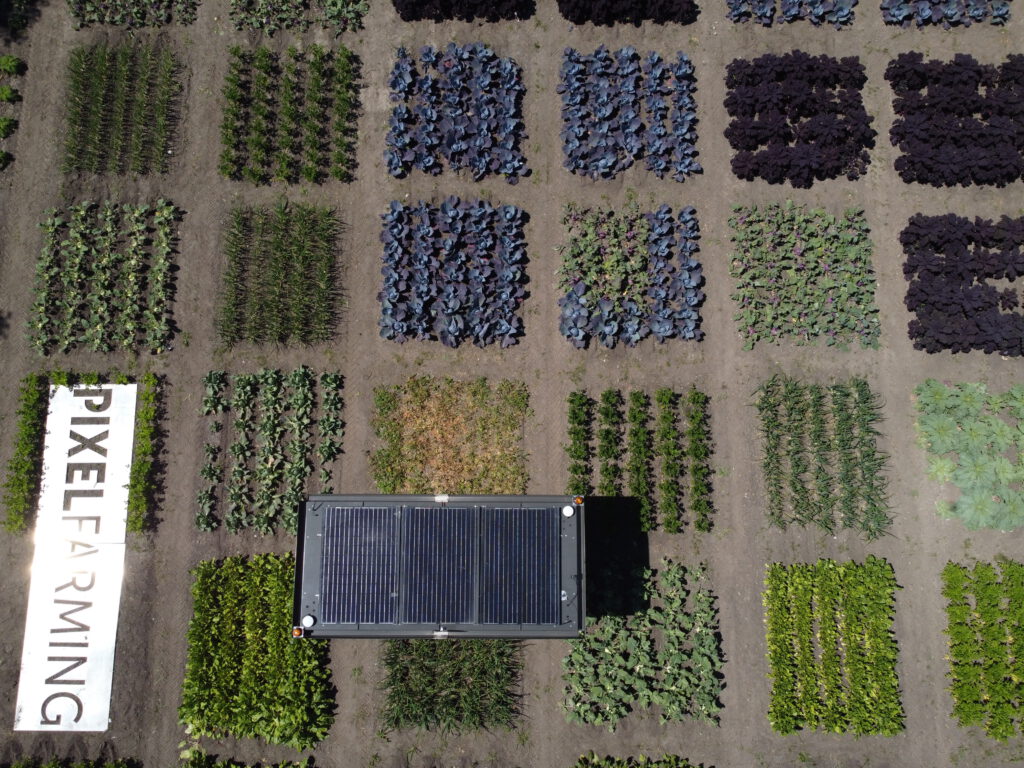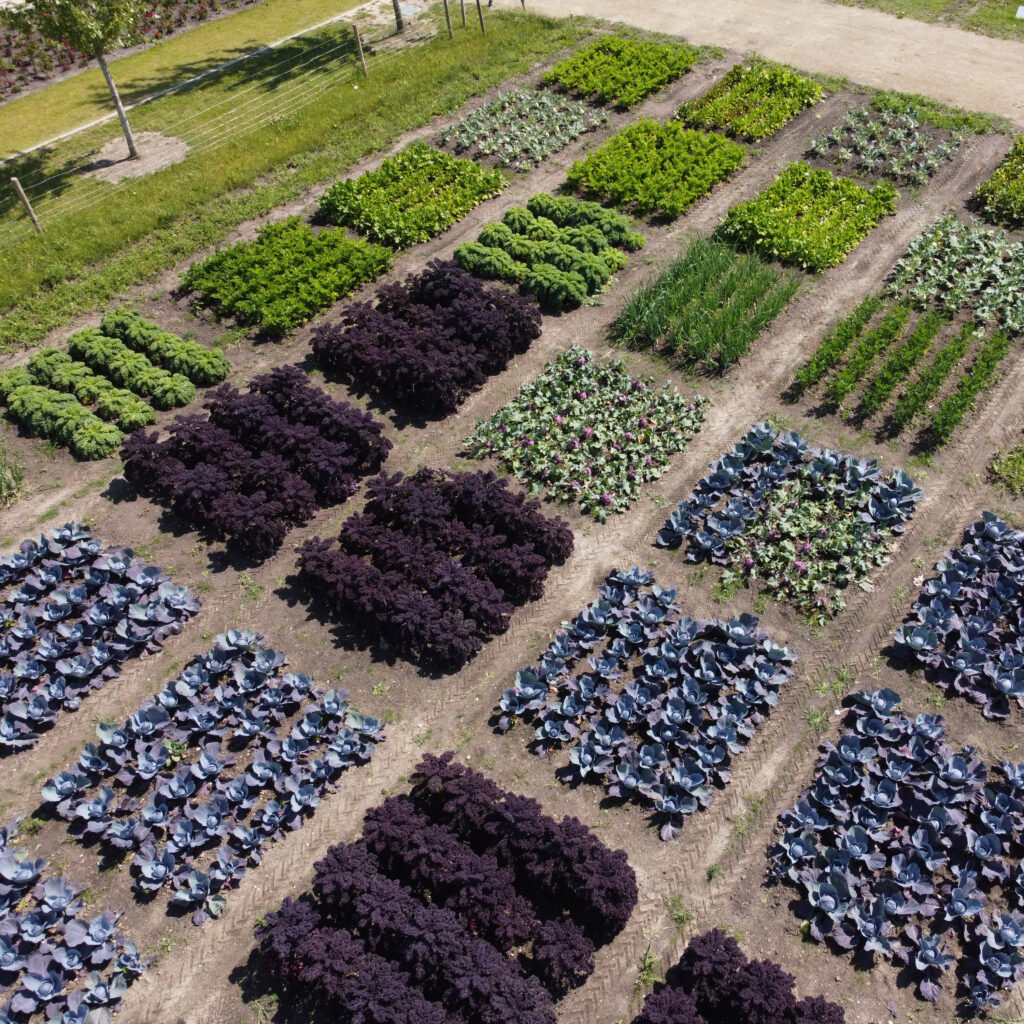What is Pixelfarming
Pixelfarming is a nature-inclusive way of cultivation that makes use of particular interactions within ecosystems of flora and fauna. By cleverly combining crops, cultivation without pesticides and fertilizers is possible.
The land is divided into pixels with different types of crops. Each pixel on the land can be linked to a particular crop, crop care and consumer. Through this method of cultivation, biodiversity can quickly recover. We see that the number of insects, birds and wild plants grows with pixelfarming, but the number of pests and weeds is limited due to the clever plant combinations in between the pixels.
Pixelfarming offers a modern approach to implementing digital technology and robotics in agriculture. In the optimum situation, all crops are in the right place to achieve maximum yield. This optimum can be calculated and predicted with computer models. In this way, an accurate cultivation plan can be made and each plant receives the attention it needs. After using a model, the crops can be planted, grown and harvested using robotics technology.
Robotics and AI (artificial intelligence) make pixel-level nurturing of the landscape possible. This lowers the labor factor of this method of cultivation and makes scaling up possible. To take care of all these different crops, all at the pixel level, an agricultural robot, Robot One, has been developed by Pixelfarming Robotics.


Pixelfarming gives you every opportunity to grow food in an optimal and nature-friendly way, without harming the environment. The future: a healthy field, a beautiful landscape, biodiversity and fair food. By combining knowledge and digital technology, we can make agriculture sustainable for people and the environment. This is desperately needed to provide the rapidly growing world population with healthy food, without depleting the earth. Fair food, grown organically with minimal environmental impact. The crops are sown, maintained and harvested automatically by a smart agricultural robot.
Knowledgebase
By cleverly interplanting crops, we can increase biodiversity, suppress weeds, and improve plant and soil health.

Many problems for which heavy chemicals are being used, can be solved with natural solutions.
Based on research of The University of Wageningen
Always up-to-date
Always the latest news on the Movement and tips on how you can contribute